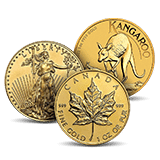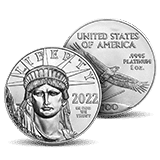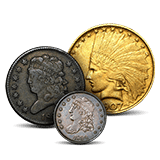
The Accented Hair Kennedy Half Dollar is a variety of the 1964 proof issue which is notable for its unique design and historical significance. It was the first proof design used for the Kennedy Half Dollar, but it was modified after Jacqueline Kennedy requested a softer hair detail.
What is the Accented Hair Kennedy Half Dollar?
The Accented Hair refers to a specific area of raised hair detail on the obverse of early 1964 proof Kennedy half dollars. This feature is located directly above and slightly behind Kennedy’s ear. In this variety, the hair strands in that area are more deeply engraved and closely grouped, forming a compact, textured cluster. The individual lines appear sharper and more pronounced than the standard proof version.
Unlike the smoother, more uniform appearance of later proofs, this section shows a noticeable buildup of line work. The texture interrupts the natural flow of the surrounding hair and stands out clearly under magnification or good lighting. It is the most visible diagnostic used to distinguish the Accented Hair variety from the regular 1964 proof issue.
How to Identify the Accented Hair Kennedy Half Dollar Variety
Look for:
- Thicker Hair Strands Above Kennedy’s Ear
- The most distinctive visual cue is a deeper, more detailed hair pattern than the standard design.
- A Missing Left Serif on the Letter “I” in LIBERTY
- Shortened or absent serif on the left side of the “I” in LIBERTY, clearly visible with magnification.
- A Modified “G” in Frank Gasparro’s “FG” Initials
- On the reverse, the “G” lacks its horizontal serif, appearing simpler under the eagle’s right leg.
Other Things to Look For
- Star-Ray Intersections Behind the Eagle’s Head: On Accented Hair coins, the rays are interrupted by the stars. On the standard version, they remain continuous.
- Side-by-Side Comparison: Placing a suspected variety next to a known standard proof greatly enhances visual recognition.
- Magnification and Lighting: Use a loupe or microscope with strong lighting to spot subtle traits such as serif absence and hairline texture.
What to Do If You Think You Have One
- Inspect your coin under intense lighting with magnification.
- Compare it against a certified proof.
- Check for all three diagnostics.
- Submit it to one of the premier grading authorities, such as PCGS or NGC, for professional evaluation.
Certification and Authentication
Given the rarity and desirability of the Accented Hair Kennedy Half Dollar, certification is essential. Professional grading services such as PCGS and NGC offer:
- Authentication of genuine Accented Hair varieties
- Protection against counterfeits and altered proofs
- Accurate grading that affects market value
Avoid raw coin purchases unless the source is highly reputable.
Origins and Design Change
After President John F. Kennedy’s assassination on November 22, 1963, the U.S. Mint began working to honor him on a half dollar. Chief Engraver Gilroy Roberts created the obverse portrait. The original proof design featured more pronounced hair strands above the ear and was soon modified at Jacqueline Kennedy’s request for a softer look. Mrs. Kennedy also influenced broader design choices.
Production and Rarity
A small percentage of 1964 proof half dollars exhibit features not found on the majority of that year’s issue. These Accented Hair coins often show overly polished fields, softened devices, and extra hairlines, which may have been a response to early die wear. The lower left serif of the letter “I” in LIBERTY is typically missing, and the obverse appears subtly altered overall. These anomalies result from proof coin production, as polished dies reveal design depth and wear.
While most examples of this obverse were paired with the Type 1 Reverse, some have been identified with the Type 2 Reverse as well. This suggests that although the majority follow the expected pairing, it is not an absolute rule, and Accented Hair obverses may appear with either reverse type. Though not truly rare, the Accented Hair variety is extremely popular. Gems are available, but most show little contrast between devices and fields. Cameo and Ultra Cameo examples are elusive and highly sought after by series specialists.
The estimated mintage ranges between 50,000 and 100,000 pieces, only 2% to 5% of the total 1964 proof mintage of 3,950,762.
Reverse Types and Die Pairing Clarification
- Type 1 Reverse: Features strong, well-defined tail feathers on the eagle—most commonly paired with Accented Hair obverses
- Type 2 Reverse: Has weaker, less defined tail feather details—appears occasionally with Accented Hair dies
Collectors should be aware that while Type 1 is the dominant pairing, Type 2 matches have been verified.
The Accented Hair Kennedy Half Dollar offers a compelling combination of historical relevance, visual diagnostics, and scarcity. By learning to identify its features accurately, numismatists can confidently pursue and preserve one of the most iconic proof variations of the 20th century.




